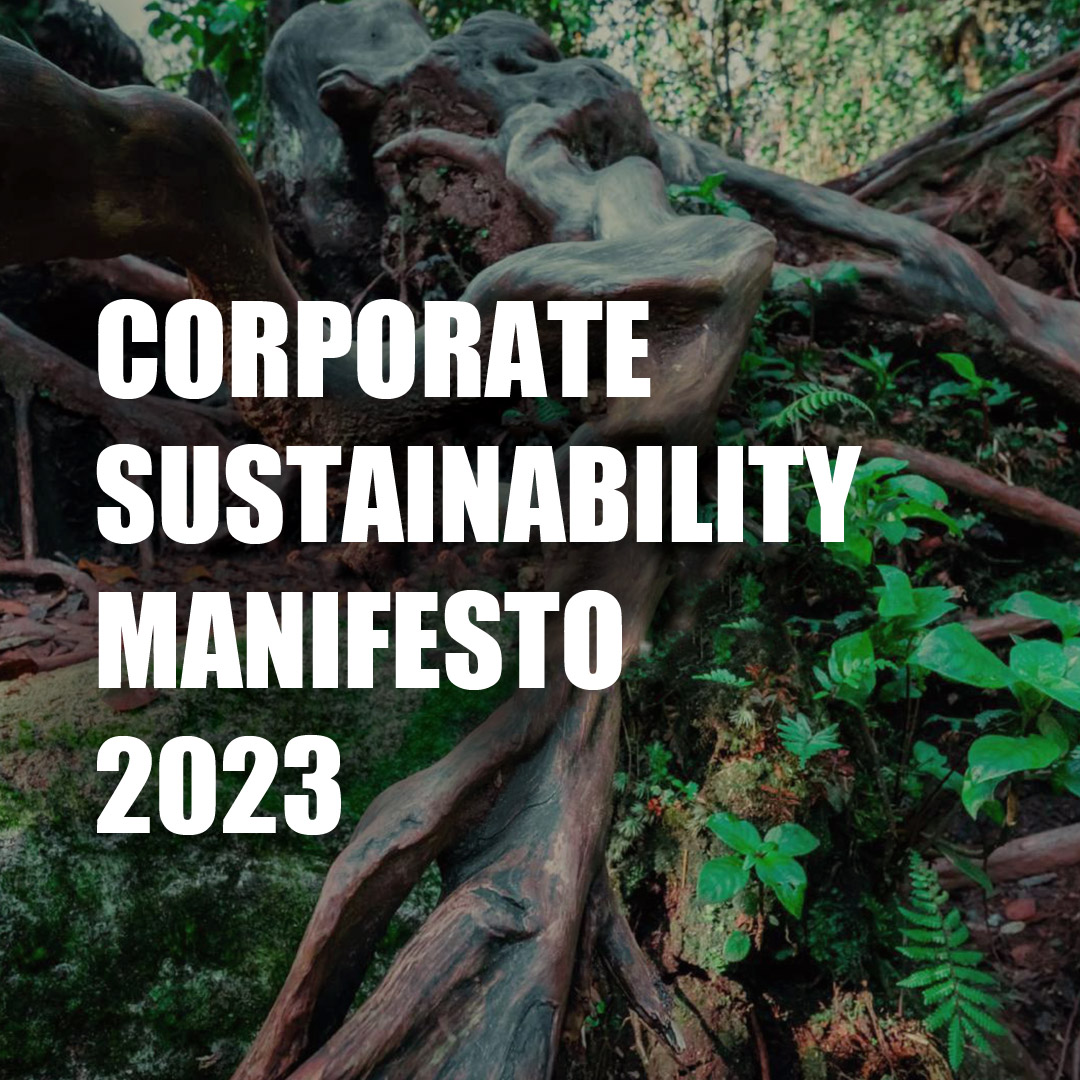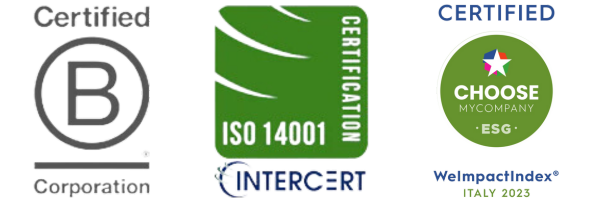ACBC Manifesto

Introduction
Climate change is a global emergency leading to devastating effects on livelihoods and communities, such as water shortages, food insecurity, extreme heat, and economic losses. In order to address this challenge, in December 2015, world leaders participating in the United Nations Framework Convention on Climate Change (UNFCCC) established a common goal through the historic Paris Climate Agreement (COP21): to limit global warming to well below 2, preferably to 1.5 degrees Celsius, compared to pre-industrial levels. This decision was made following multiple scientific studies showing that an increase in global temperatures above 1.5 degrees Celsius would put the planet at risk.
It is estimated that the fashion industry is responsible for 10% of global carbon emissions, a percentage higher than international flights and maritime shipping combined1. To ensure the transition towards a more sustainable world, fashion companies have been called upon to contribute to the achievement of the Paris Agreement goal by reducing their carbon emissions over the next decade. As a leader in the footwear and fashion sector, ACBC has decided to take a step forward to reduce the environmental impact of its products and to support other companies in their journey towards the adoption of more responsible productive and commercial practices.
1EUROPEAN PARLIAMENT, The impact of textile production and waste on the environment. Taken from: https://www.europarl.europa.eu/news/en/headlines/society/20201208STO93327/the-impact-of-textile-production-and-waste-on-the-environment-infographic.
Objectives
1ACBC has established three main goals to reduce its environmental impact and transform the fashion industry in line with the ambitions of the Paris Agreement on Climate Change:
- To transform 1% of the footwear market by 2027, equivalent to 5,7 billion EUR, supporting companies in the luxury and sport sectors through ACBC’s know-how in terms of industrial practices, processes, and materials.
- To ensure that all the products generated by the ACBC brand or produced in collaboration with ACBC contain a responsible input of at least 30%2 of the total weight of the product by 2023 and at least 60% of the total weight of the product by 2027.
- To guarantee that all the products created or transformed in collaboration with ACBC have a CO2 impact that is at least 30% lower than standard products in the market by 2023 and at least 50% lower than standard products in the market by 20273.
These goals build on the progress already made to reduce the company’s impacts. For instance, one of the company’s milestones is to be the first B Corp in the footwear sector in Europe. B Corp Certification is a designation that a business is meeting high standards of verified performance, accountability, and transparency on factors from employee benefits and charitable giving to supply chain practices and input materials. ACBC has also won multiple practices for its sustainable practices such as the Sustainable Fashion Award of the Montecarlo Fashion Week 2021, the World’s Most Sustainable Shoe 2019 of the Green Carpet Fashion Awards, and the Prize of the Best Start-Up with Social Impact 2021 of Social Innovation Monitor.
ACBC is aware that a reduction of the environmental impact of the fashion and footwear sector cannot be delivered by the brand alone and requires the collaboration of multiple actors in the public and private sector. Hence, ACBC will not only ensure that its own brand products have a lower environmental impact than average products in the market, but it will also provide support to companies and productive facilities willing to reduce their environmental footprint and improve their productive practices. Additionally, ACBC has committed to supporting the 2030 UN Agenda for Sustainable Development through its adherence to the Global Compact, the world’s largest corporate sustainability initiative.
2For more information on the definition of responsible input by ACBC, please consult the section 6.
3For the calculation of the impact reduction, ACBC takes as a baseline for (1) transformed products the standard version of these products (pre-transformation) and, for (2) products created from zero, products with similar characteristics in the collection of the brand (when available) or products available in the market with similar characteristics.
Scope
ACBC will focus on eight key areas to boost its impact on the footwear, clothing, and accessories market:
- Responsible input: maximization the responsible input4 of each of the products created, co-created or transformed by ACBC.
- Responsible sourcing: Acquisition of materials from suppliers with social and environmental certifications that allow for the traceability of the origin and properties of the materials.
- Carbon emissions at the product level: Creation and transformation of products with lower carbon footprint than their standard counterparts or similar products in the market.
- Carbon emissions at the factory level: Support to factories and production facilities for the reduction of their environmental impact, especially in terms of carbon footprint and energy use.
- Eco-design: participation in the development of recyclable and biodegradable products with characteristics that allow for the disassembling, recovery, and reuse or compostability of the product’s components at the end of its life cycle, such as single-material components.
- Waste reduction: Optimization of production processes to reduce waste and reutilize it when possible.
- Training: Provision of training and workshops to employees of ACBC and partner companies in relevant topics for promoting sustainable production and consumption.
- End-of-life: commitment to extending the life of products through the selection of intrinsic product characteristics and provision of training to end-users to promote product life extension.
4For more information on the definition of responsible input, please consult the section 6 of the document.
Action plan
The strategy of ACBC to reach its environmental goals and address its key areas of interest is integrated by various actions described as follows:
- Dedicate specialized resources to R&D for finding innovative materials with reduced CO2 impact to include in new products developed by ACBC.
- Yearly introduce in the market at least 50 products with reduced environmental impact stemming from processes of product transformation with partner brands or creation of new models with characteristics of sustainability.
- Continuously retrieve and update the certifications of materials and factories associated to ACBC to ensure traceability and transparency.
- Provide consulting services to third parties to facilitate their access to the database of sustainable materials of ACBC.
- Provide consulting services to factories and productive facilities in order to support them in the obtention of certifications and the improvement of the efficiency of their productive practices.
- Provide trainings on demand in different fields related to sustainability in fashion, including but not limited to: eco-design, material properties, carbon footprint calculation.
- Ensure that all the ACBC factories take actions to prevent the discharge of hazardous chemicals.
- Guarantee that all the ACBC factories implement actions to optimize the use of energy and water.
- Develop 100% animal free products for the ACBC brand.
Transversal areas
Sustaining a responsible business requires a holistic approach that is not limited to environmental protection actions. To have a positive impact on people and the planet, ACBC knows that there are fundamental aspects that need to be part of all the actions undertaken by the company, such as:
- Diversity and inclusion: Diversity in the workplace means that the staff consists of individuals with unique talents, viewpoints, and potential. These individuals bring new perspectives and backgrounds to the table. Diverse and inclusive workplaces earn deeper trust and more commitment from their employees as their special characteristics and talents are recognized. The fair treatment and recognition of the talents of each worker leads to their empowerment, which is fundamental to boost the staff’s creativity and well-being.
- Empowered communities: ACBC believes that the company’s work should not only focus on its commercial and environmental impact but also on its social impact. In this sense, ACBC supports activities for raising awareness about sustainability in schools through ACBC Kids. The company firmly believes that the new generations should be encouraged from an early age to contribute to climate change mitigation and environmental conservation.
- Transparency: ACBC is committed to informing consumers about the real content of its products, ensuring that consumers can verify the sustainability claims carried out by ACBC. For this reason, each product created by ACBC or carried out in collaboration with the brand has an associated sustainability disclosure in which all the elements of the product are communicated to the public. Additionally, in agreement with the Code of Ethics of ACBC, suppliers are requested to respect minimum requirements in terms of environmental sustainability, social sustainability and employees’ rights, protection of workplace safety and health, observance of the law and of business ethics, which should be transparently communicated to ACBC.
Methodology
The products generated or transformed by ACBC have a lower environmental impact than products with similar characteristics on the market, which can be demonstrated through ACBC’s rigorous scientific approach for Product Carbon Footprint (PCF) Calculation. Our assessment is compliant with the Greenhouse Gas Protocol standards for accounting and reporting, and it collects information from consistent sources such as scientific life cycle assessment databases and ACBC’s primary data. This company’s methodology for PCF calculation consists of six main steps:
- System Boundaries Definition: The phases of the life cycle of a product taken into consideration by ACBC are raw materials, manufacturing, distribution, packaging and end of life. The analysis excludes the use phase.
- Data collection on the analyzed product: ACBC collects information for every component of the product analyzed taking into consideration information such as composition, supplier, and material origin, among others.
- Component Weighing: Each component of the product is weighted to determine the responsible input of the product, which can be interpreted as the percentage of the total weight of the product that corresponds to materials with characteristics of sustainability. These materials can be recycled, biobased, biodegradable, animal free, among others.
- Emissions factor identification: Based on products’ component composition, ACBC identifies the impact factor of each material.
- CO2 impact calculation: ACBC then calculates the CO2 impact of the product, taking into account production waste. If not available, secondary data values are used to complete the missing information. ACBC aims at obtaining the highest possible data quality and strives to use primary data when available, collecting it from the multiple stakeholders involved in the product conception and production. The company consults and supports other businesses to collect, document and compare data. ACBC strives to reduce data gaps to the least amount as possible; however, it accounts for unavoidable data gaps and suggests accounting for a 15% deviation of the PCF in order to fully cover emissions in the compensation phase.
- Results documentation in the form of an official report: ACBC carries out a detailed report in which it presents the aspects taken into consideration for the calculation of the carbon footprint of the product and the results in terms of CO2 emissions reduction regarding standard products.
ACBC not only analyzes the environmental impact of products but also of production process. Therefore, it supports factories in the obtention of environmental certifications, the improvement of their production practices and the reduction of their CO2 emissions. By creating a tailor-made sustainability strategy, ACBC helps companies and productive facilities to reach their emissions reduction target. Additionally, the company provides support in activities related to CO2 compensation and responsible communication of actions for sustainability.
ABOUT ACBC
ACBC SERVICES
Follow us

